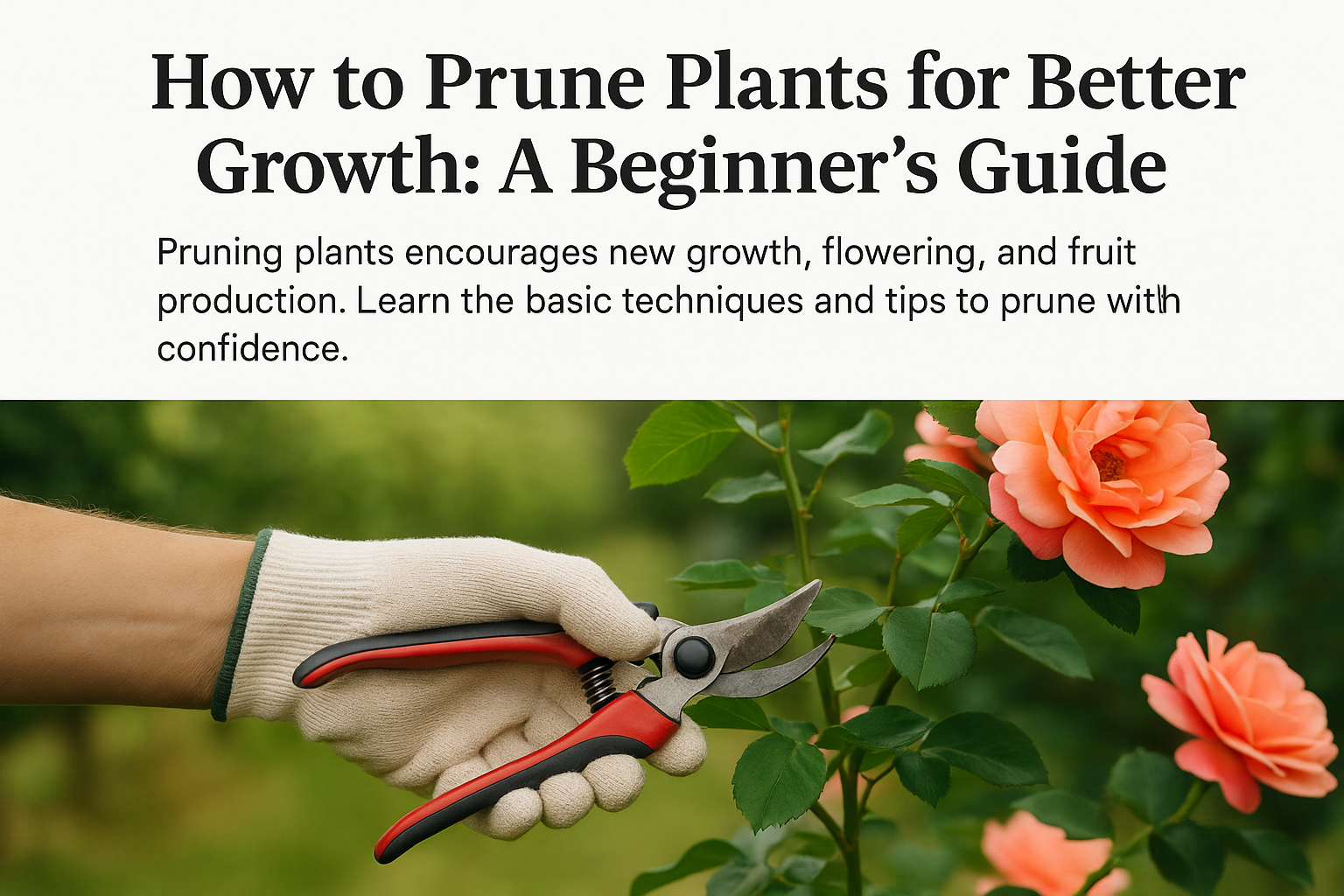Pruning may seem intimidating to new gardeners, but it’s one of the most powerful ways to help plants grow stronger, healthier, and more productive. Done correctly, pruning can improve airflow, stimulate new growth, and even boost flowering and fruiting. This guide will show you how, when, and why to prune plants with confidence.
Why Prune Plants?
Pruning isn’t just about appearance—it’s about plant health:
- Removes dead or diseased branches
- Improves air circulation to prevent mildew and pests
- Encourages bushier, more compact growth
- Directs energy to productive stems and fruits
- Shapes the plant for space or aesthetics
Regular pruning leads to healthier, happier plants.
Tools You’ll Need
- Pruning shears: For stems under ¾ inch thick
- Loppers: For thicker branches on shrubs or trees
- Sharp scissors: Good for herbs and houseplants
- Gloves: Protect your hands from thorns or sap
- Rubbing alcohol or sanitizer: To clean tools between cuts
Always start with clean, sharp tools to avoid damaging plants.
When to Prune
General Tips:
- Late winter or early spring: Best for most perennials and trees
- After flowering: For plants that bloom on old wood (like lilac or forsythia)
- During active growth: Herbs and houseplants benefit from light pruning any time
- Avoid heavy pruning in fall: It can trigger new growth before winter
Check the specific needs of each plant for timing guidance.
How to Prune: Basic Techniques
1. Pinching
- Use your fingers to remove the soft tips of new growth
- Encourages branching in herbs like basil or mint
2. Deadheading
- Snip off spent flowers to encourage more blooms
- Useful for annuals, roses, and perennials
3. Thinning
- Remove entire branches or stems at their base
- Improves air flow and reduces crowding
4. Topping or Heading
- Cut off part of a stem above a leaf node or bud
- Controls size and encourages fuller growth
5. Rejuvenation
- Cut plant down to a few inches above ground (for shrubs)
- Revives old or woody growth
Use the right method depending on the plant’s structure and purpose.
Where to Cut
- Cut just above a node or leaf joint at a slight angle
- Don’t leave long stubs—they can rot or attract pests
- For diseased branches, cut back to healthy wood
- For overlapping stems, cut the weaker one
Always step back and assess before making each cut.
Common Plants and How to Prune Them
Herbs (basil, mint, thyme):
- Pinch regularly to keep bushy and prevent flowering
Tomatoes:
- Remove suckers (small shoots between stem and branch)
- Keep lower leaves trimmed to improve air flow
Flowering Shrubs (roses, hydrangeas, lavender):
- Deadhead blooms
- Cut back stems annually depending on bloom cycle
Houseplants (pothos, spider plants, fiddle leaf fig):
- Trim leggy vines or overgrown leaves
- Wipe blades before pruning to avoid disease spread
Fruit Trees:
- Thin out branches for light penetration
- Remove crossed or vertical shoots
Every plant benefits from occasional cleanup and reshaping.
Pruning Mistakes to Avoid
- Over-pruning: Too much at once can shock plants
- Pruning at the wrong time: May reduce flowering or fruiting
- Using dull tools: Can crush stems and invite disease
- Cutting without a plan: Always know why you’re pruning
If in doubt, prune lightly—you can always trim more later.
Final Thoughts: Shape Your Garden with Confidence
Pruning is both art and science. With a little practice and knowledge, you’ll soon be shaping your garden with purpose and ease. The results? Healthier plants, more blooms, and a neater, more vibrant space. Start small, observe your plants, and watch them thrive.

